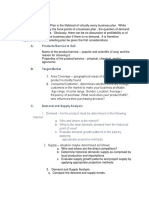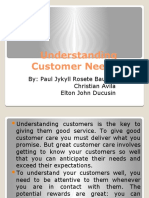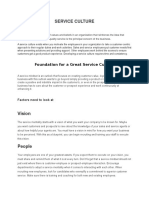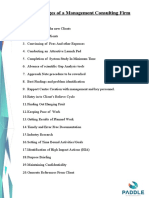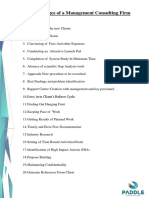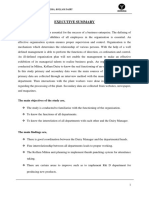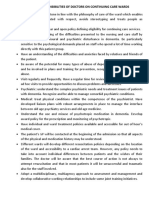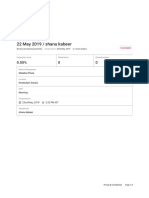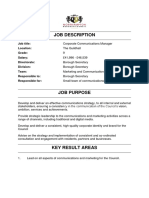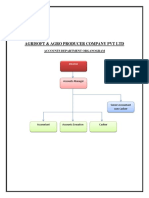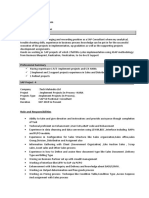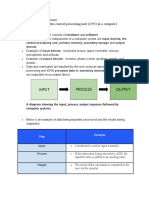100% found this document useful (2 votes)
3K views9 pagesCustomer Analysis
Customer analysis involves identifying target customers, understanding their needs, and how the product satisfies those needs. It includes behavioral and demographic profiles. Customer profiles help businesses better understand current and potential customers to increase sales and growth. They provide information on who customers are, what they do, why and how they buy, how much they can spend, their expectations, and how they view competitors. Tools like surveys, analytics, and journey mapping can help businesses deeply understand customers and anticipate their future needs. Key metrics include customer satisfaction, lifetime value, segmentation, sales channels, and web analytics.
Uploaded by
Shanu KabeerCopyright
© © All Rights Reserved
We take content rights seriously. If you suspect this is your content, claim it here.
Available Formats
Download as DOCX, PDF, TXT or read online on Scribd
100% found this document useful (2 votes)
3K views9 pagesCustomer Analysis
Customer analysis involves identifying target customers, understanding their needs, and how the product satisfies those needs. It includes behavioral and demographic profiles. Customer profiles help businesses better understand current and potential customers to increase sales and growth. They provide information on who customers are, what they do, why and how they buy, how much they can spend, their expectations, and how they view competitors. Tools like surveys, analytics, and journey mapping can help businesses deeply understand customers and anticipate their future needs. Key metrics include customer satisfaction, lifetime value, segmentation, sales channels, and web analytics.
Uploaded by
Shanu KabeerCopyright
© © All Rights Reserved
We take content rights seriously. If you suspect this is your content, claim it here.
Available Formats
Download as DOCX, PDF, TXT or read online on Scribd
/ 9




